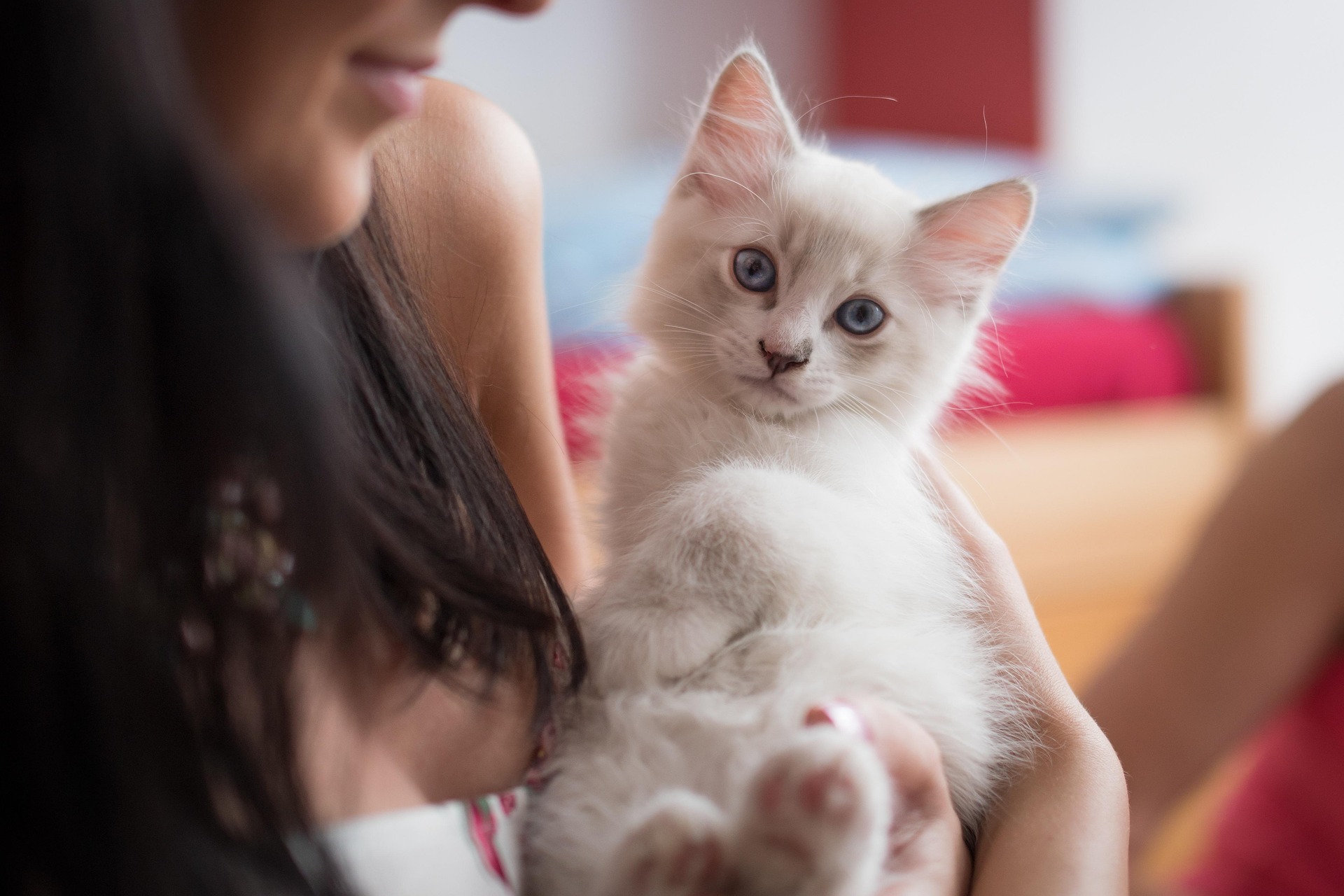Few things compare to the thrill of bringing home a floppy, blue-eyed Ragdoll kitten—but that first vet visit is far more than just a box to tick. Even if your kitten appears perfectly healthy, an early check-up establishes a strong baseline for lifelong wellness and detects hidden issues early.
This visit isn’t just about vaccines—it’s about establishing a clear medical and behavioral baseline. Ragdolls can face breed-specific risks like HCM and bladder problems, which benefit from early checks.
Your vet will check growth, screen for parasites, and guide you on nutrition and socialization—even if your Ragdoll never sets a paw outside. Delaying that first visit can let subtle problems slip by, like heart murmurs or infections. Book that appointment within days—your Ragdoll’s long, healthy life starts here.
When to Schedule Your Ragdoll Kitten’s First Vet Visit
The ideal time to schedule your Ragdoll kitten’s first vet visit is within the first 3–7 days of bringing them home. This early window lets your vet confirm your kitten’s health, catch hidden issues, and validate any breeder or shelter health guarantees.
Even if a breeder has done a check-up, it’s important to have your own baseline records and get clear on vaccination and parasite control schedules. Many new owners wait weeks, not realizing they could miss early signs of heart murmurs, infections, or parasites.
Here’s a tip: book the appointment before pickup day—popular clinics fill up fast, and your Ragdoll’s health shouldn’t wait.
Preparing for Your Kitten’s First Vet Visit
Start by gathering essential documents—breeder or shelter health records, vaccination dates, and microchip info—so your vet has the full picture. Use a secure, well-ventilated carrier lined with familiar bedding, and help your kitten get used to it by leaving it open at home and taking short practice car rides.
Bring a list of questions about vaccines, what to feed your Ragdoll, coat care, and any breed-specific health concerns. On the day, cover the carrier with a light towel to help your kitten feel safe, and keep the visit positive with gentle handling and kitten-safe treats.
A little prep goes a long way to keep your kitten calm—and lets your vet focus on what really matters: their health.
You Might Also Like
What to Bring to the Appointment
Pack health records—vaccination history, breeder or adoption paperwork, and any previous vet notes—to avoid delays in care. Bring any current medications or supplements so your vet can check dosages.
Add a comfort item—like your kitten’s favorite blanket or toy—to help them relax in the waiting room. Don’t forget your ID and emergency contact info, plus pet insurance details if you have them.
Here’s a tip: pack everything the night before—trust me, nobody wants to hunt for papers five minutes before you leave.
What Happens During the First Vet Visit
Your Ragdoll kitten’s first vet appointment is more than a routine check. Knowing what to expect will help you feel confident and ensure your kitten stays relaxed throughout the process. Here’s a clear look at each stage of the visit.
Complete Physical Exam
The vet will check your kitten’s weight, vital signs, eyes, ears, teeth, skin, joints, and abdomen to detect any early health concerns. For Ragdolls, this thorough exam is important since their calm nature can mask symptoms. Even if your kitten seems perfectly healthy, subtle issues like hernias or joint laxity can surface here.
Vaccination & Parasite Prevention
Depending on age, your kitten may receive core vaccines like FVRCP and possibly FeLV, along with deworming treatment. Even if your Ragdoll lives indoors, they can still pick up parasites. That’s why early prevention is key.
Microchipping
If not already done, your vet may recommend microchipping. It’s quick, safe, and can reunite you with your kitten if they ever slip outside—especially important for curious Ragdolls.
Behavior & Socialization Check
Your vet will observe how your kitten reacts to handling. Ragdolls are usually gentle, but extreme shyness or stress could signal environmental or socialization needs worth addressing early.
Discuss Spaying/Neutering Timeline
If your kitten isn’t already altered, your vet will advise on the ideal time, usually around 5–6 months. This helps prevent unwanted behaviors, health issues, and accidental litters.
Now that you know what the visit involves, let’s look at how much it typically costs—and how to plan for it
You Might Also Like
How Old Do Kittens Have to Be to Get Fixed? Spay Timing Guide
How Much Does the First Vet Visit Cost?
Your Ragdoll kitten’s first vet visit can range from basic (exam + 1 vaccine) at about $50–$75 to a comprehensive package (exam, multiple vaccines, deworming, microchipping) at $150–$250, and prices can vary by location and clinic type.
Essential services like vaccinations, parasite prevention, and a full exam should never be skipped, as delaying them can lead to higher costs later. Optional services, like microchipping, are still highly recommended for long-term safety.
To avoid surprises, call ahead for a detailed cost breakdown and ask about wellness packages or pet insurance. Planning early ensures you protect both your kitten’s health and your budget from day one.
Follow-Up Care & Next Steps
Your Ragdoll kitten’s first vet visit is just the start of their lifelong health routine. Within 3–4 weeks, schedule the next vaccination booster and set reminders for future deworming or checkups.
Keep a kitten health log—note weight, vaccine dates, eating habits, and any behavioral changes. Mild sleepiness after vaccines is normal for a day, but watch for red flags like appetite loss that lasts longer.
At home, handle paws, ears, and mouth gently to reduce stress at future visits, and reintroduce the carrier with treats. Staying consistent now is how I keep my kitten calm, healthy, and ready for every vet visit ahead.
FAQs
How long will the first vet visit take?
Usually 20–40 minutes, depending on exams, vaccines, and questions.
Can I skip the first vet visit if my kitten seems healthy?
No early checks catch hidden issues like parasites or heart concerns common in Ragdolls.
Should I feed my kitten before the appointment?
A light meal 2 hours before is fine; avoid heavy feeding to prevent car sickness.
How many vet visits in the first year?
3–4 visits for vaccines, boosters, and health monitoring.
Anything different for Ragdolls?
Yes — vets may check for HCM risk and monitor their sensitive digestion more closely.
How do I transport my kitten safely?
Use a sturdy carrier with a soft towel, and secure it in your car.
You Might Also Like
Final Thoughts
Your Ragdoll kitten’s first vet visit is more than a health check—it’s the start of a lifelong care partnership. Book this appointment within the first week to set the stage for vaccinations, bonding, and early developmental checks. Arrive prepared with your kitten’s medical history, a written list of questions, and comfort items like a favorite blanket.
Use this visit to go beyond vaccines—talk about nutrition, grooming, parasite prevention, and neutering timelines. A calm, positive first experience builds trust between your kitten and the vet, making future visits easier.
Consistency, preparation, and early action now are how I keep my own Ragdoll calm, healthy, and ready for each checkup. Got a tip for smoother vet visits? Drop it below—it might help another Ragdoll parent!
Founder of Cats Question, a veterinarian (DVM), and lifelong cat enthusiast with hands-on experience in feline care. Passionate about helping cat owners through expert-backed, compassionate advice inspired by years of living and learning alongside cats.






